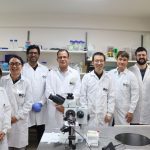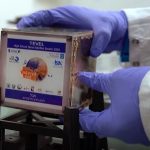Discovery of Hidden Brain Mechanisms in Autism Offers Hope for Targeted Gene Therapies
Jerusalem, 20 November, 2024 (TPS-IL) -- In a significant stride for autism research, scientists identified critical brain mechanisms tied to genetically-based autism, laying the groundwork for novel gene therapies, better diagnostic tools, and broader treatment approaches.
Autism, formally known as Autism Spectrum Disorder (ASD), is a neurodevelopmental disorder characterized by challenges in social communication, restricted and repetitive behaviors, and varying levels of cognitive functioning. The symptoms and severity can vary widely between individuals, which is why it is referred to as a “spectrum.” ASD is believed to arise from a combination of genetic and environmental factors, but its exact cause remains unclear. Autism affects around 1-2% of the population globally.
A team of Tel Aviv University researchers led by Prof. Boaz Barak and PhD student Inbar Fischer focused on two previously unexplored mechanisms in autism, specifically in cases linked to SHANK3 gene mutations. SHANK3 is a crucial gene that encodes a protein involved in the proper functioning of neurons in the brain and plays a vital role in synaptic signaling — the process by which neurons communicate with each other. Mutations in SHANK3 disrupt this process, impairing brain development and function.
The study, published in the peer-reviewed Science Advances journal, found that the SHANK3 mutations not only affect neurons, as previously understood but also impair oligodendrocytes — non-neuronal cells in the brain. These cells are essential for producing myelin, the fatty layer that insulates nerve fibers and ensures proper electrical signal transmission between neurons. Previously, oligodendrocytes were regarded as supportive cells, playing a secondary role to neurons in brain function.
The researchers also found that mutations in SHANK3 disrupt myelin production in oligodendrocytes, leading to faulty insulation around nerve fibers. This impairment results in the “leaking” of electrical signals, which hampers brain communication and synchronization. Myelin damage, thus, is not just a secondary issue but a core contributor to the brain dysfunction seen in autism linked to SHANK3 mutations.
These findings suggest that autism may involve more complex and widespread disruptions in brain function, extending beyond neuronal issues to include myelin-related dysfunctions, opening up new potential therapeutic avenues.
Using a genetically engineered mouse model carrying the SHANK3 mutation, the team observed dual impairments. First, oligodendrocytes themselves were unable to properly bind and process chemical signals due to defective SHANK3 protein. Second, these impaired cells produced faulty myelin, weakening the efficiency of electrical signal transmission and disrupting brain synchronization.
“Behavioral changes in the mice confirmed the impact of these impairments,” said Fischer. “The findings highlight a previously unrecognized role for oligodendrocytes in autism.”
The researchers then introduced DNA segments containing the normal human SHANK3 sequence into oligodendrocytes derived from the brains of affected mice. This genetic treatment allowed the cells to produce functional SHANK3 protein, restoring their ability to bind receptors and support proper development and function.
To further validate these results, the team replicated their findings using human-induced pluripotent stem cells. Derived from a girl with the same SHANK3 mutation, these cells exhibited the same defects observed in the mouse model. Post-treatment, the cells showed restored functionality, reinforcing the potential of this gene therapy.
The study’s implications extend beyond SHANK3-related autism. Recognizing the role of myelin in autism could revolutionize understanding of the condition’s underlying mechanisms. “Defective myelin plays a significant role in autism. Our findings open the door to new therapeutic pathways, even for cases not directly linked to SHANK3 mutations,” Barak said.
“Ultimately, our goal is to develop treatments that not only address behavioral symptoms but also target the root causes of autism,” he added.
The findings demonstrate the potential for developing gene-based treatments for autism and identifying diagnostic markers. Healthcare providers could look for myelin-related impairments or disruptions in oligodendrocyte function when diagnosing and understanding the underlying causes of autism in patients.







